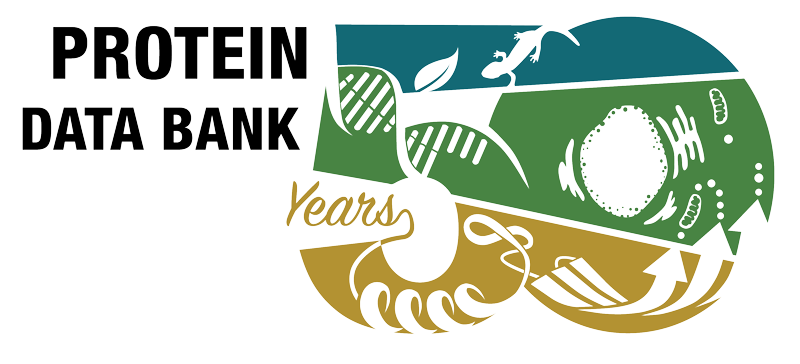Reviews - 1bqh mentioned but not cited (4)
- The structural basis of αβ T-lineage immune recognition: TCR docking topologies, mechanotransduction, and co-receptor function. Wang JH, Reinherz EL. Immunol Rev 250 102-119 (2012)
- Codification of bidentate pMHC interaction with TCR and its co-receptor. Reinherz EL, Wang JH. Trends Immunol 36 300-306 (2015)
- Strict Major Histocompatibility Complex Molecule Class-Specific Binding by Co-Receptors Enforces MHC-Restricted αβ TCR Recognition during T Lineage Subset Commitment. Li XL, Teng MK, Reinherz EL, Wang JH. Front Immunol 4 383 (2013)
- Structure, function, and immunomodulation of the CD8 co-receptor. Srinivasan S, Zhu C, McShan AC. Front Immunol 15 1412513 (2024)
Articles - 1bqh mentioned but not cited (11)
Reviews citing this publication (34)
- How TCRs bind MHCs, peptides, and coreceptors. Rudolph MG, Stanfield RL, Wilson IA. Annu Rev Immunol 24 419-466 (2006)
- Molecular interactions mediating T cell antigen recognition. van der Merwe PA, Davis SJ. Annu Rev Immunol 21 659-684 (2003)
- Structure and function of natural killer cell receptors: multiple molecular solutions to self, nonself discrimination. Natarajan K, Dimasi N, Wang J, Mariuzza RA, Margulies DH. Annu Rev Immunol 20 853-885 (2002)
- The specificity of TCR/pMHC interaction. Rudolph MG, Wilson IA. Curr Opin Immunol 14 52-65 (2002)
- The nature of molecular recognition by T cells. Davis SJ, Ikemizu S, Evans EJ, Fugger L, Bakker TR, van der Merwe PA. Nat Immunol 4 217-224 (2003)
- Roles for glycosylation of cell surface receptors involved in cellular immune recognition. Rudd PM, Wormald MR, Stanfield RL, Huang M, Mattsson N, Speir JA, DiGennaro JA, Fetrow JS, Dwek RA, Wilson IA. J Mol Biol 293 351-366 (1999)
- Doubting the TCR coreceptor function of CD8alphaalpha. Cheroutre H, Lambolez F. Immunity 28 149-159 (2008)
- Molecular interactions of coreceptor CD8 and MHC class I: the molecular basis for functional coordination with the T-cell receptor. Gao GF, Jakobsen BK. Immunol Today 21 630-636 (2000)
- Molecular coordination of alphabeta T-cell receptors and coreceptors CD8 and CD4 in their recognition of peptide-MHC ligands. Gao GF, Rao Z, Bell JI. Trends Immunol 23 408-413 (2002)
- Mucosal-associated invariant T (MAIT) cells: an evolutionarily conserved T cell subset. Treiner E, Duban L, Moura IC, Hansen T, Gilfillan S, Lantz O. Microbes Infect 7 552-559 (2005)
- Structural and thermodynamic correlates of T cell signaling. Rudolph MG, Luz JG, Wilson IA. Annu Rev Biophys Biomol Struct 31 121-149 (2002)
- MHC superfamily structure and the immune system. Maenaka K, Jones EY. Curr Opin Struct Biol 9 745-753 (1999)
- Interactions between MHC molecules and co-receptors of the TCR. König R. Curr Opin Immunol 14 75-83 (2002)
- Structural basis of T cell recognition of peptides bound to MHC molecules. Wang JH, Reinherz EL. Mol Immunol 38 1039-1049 (2002)
- Structural and functional aspects of lipid binding by CD1 molecules. Silk JD, Salio M, Brown J, Jones EY, Cerundolo V. Annu Rev Cell Dev Biol 24 369-395 (2008)
- The molecular determinants of CD8 co-receptor function. Cole DK, Laugel B, Clement M, Price DA, Wooldridge L, Sewell AK. Immunology 137 139-148 (2012)
- T-cell allorecognition: a case of mistaken identity or déjà vu? Archbold JK, Macdonald WA, Burrows SR, Rossjohn J, McCluskey J. Trends Immunol 29 220-226 (2008)
- Asymmetric ligand recognition by the activating natural killer cell receptor NKG2D, a symmetric homodimer. Strong RK. Mol Immunol 38 1029-1037 (2002)
- TCR-MHC docking orientation: natural selection, or thymic selection? Collins EJ, Riddle DS. Immunol Res 41 267-294 (2008)
- Structural basis of cell-cell interactions in the immune system. Wang J, Reinherz EL. Curr Opin Struct Biol 10 656-661 (2000)
- MHC class I recognition by Ly49 natural killer cell receptors. Natarajan K, Dimasi N, Wang J, Margulies DH, Mariuzza RA. Mol Immunol 38 1023-1027 (2002)
- Structural immunology and crystallography help immunologists see the immune system in action: how T and NK cells touch their ligands. Chen Y, Shi Y, Cheng H, An YQ, Gao GF. IUBMB Life 61 579-590 (2009)
- Molecular interactions between extracellular components of the T-cell receptor signaling complex. Garcia KC. Immunol Rev 172 73-85 (1999)
- The use of chimeric A2K(b) tetramers to monitor HLA A2 immune responses in HLA A2 transgenic mice. Choi EM, Palmowski M, Chen J, Cerundolo V. J Immunol Methods 268 35-41 (2002)
- Co-receptors and recognition of self at the immunological synapse. Gascoigne NR, Zal T, Yachi PP, Hoerter JA. Curr Top Microbiol Immunol 340 171-189 (2010)
- Integrating Experiment and Theory to Understand TCR-pMHC Dynamics. Buckle AM, Borg NA. Front Immunol 9 2898 (2018)
- Evolution and molecular interactions of major histocompatibility complex (MHC)-G, -E and -F genes. Arnaiz-Villena A, Suarez-Trujillo F, Juarez I, Rodríguez-Sainz C, Palacio-Gruber J, Vaquero-Yuste C, Molina-Alejandre M, Fernández-Cruz E, Martin-Villa JM. Cell Mol Life Sci 79 464 (2022)
- Antigen presenting cells integrate opposing signals from CD4+ and CD8+ regulatory T lymphocytes to arbitrate the outcomes of immune responses. Lederman S, Suciu-Foca N. Hum Immunol 60 533-561 (1999)
- Molecular analysis of protein interactions mediating the function of the cell surface protein CD8. Devine L, Kavathas PB. Immunol Res 19 201-210 (1999)
- Research progress of nanovaccine in anti-tumor immunotherapy. Yao M, Liu X, Qian Z, Fan D, Sun X, Zhong L, Wu P. Front Oncol 13 1211262 (2023)
- Structural and dynamic features of HLA-B27 subtypes. Uchanska-Ziegler B, Ziegler A, Schmieder P. Curr Opin Rheumatol 25 411-418 (2013)
- Regulation of natural killer cell function: a role for the NK cell's own MHC class I molecules. Held W, Chalifour A, Coudert JD. Med Microbiol Immunol 194 169-174 (2005)
- Assembling atomic resolution views of the immunological synapse. Wang JH, Eck MJ. Curr Opin Immunol 15 286-293 (2003)
- A rational design approach for developing immunomodulators based on CD4 and CD8. Tretiakova AP, Albert RH, Jameson BA. Biotechnol Genet Eng Rev 19 175-203 (2002)



 PMID:
PMID: 